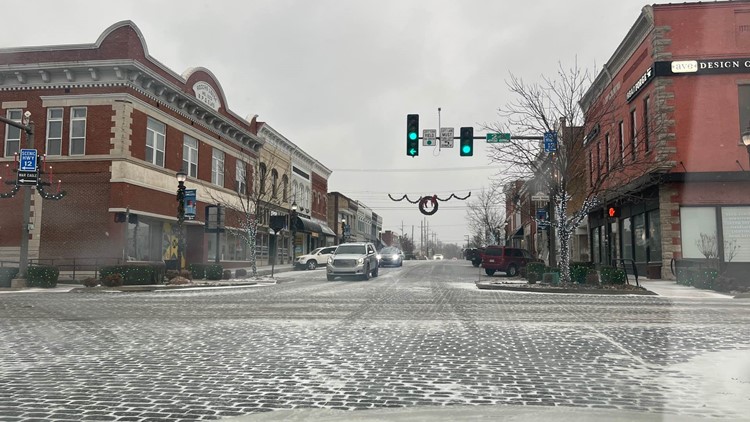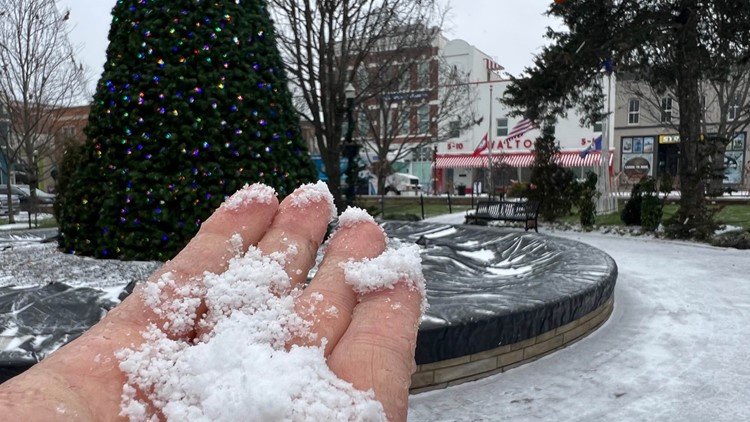ARKANSAS, USA — With the incoming extreme winter weather, it's important to be informed on how to weather the storm.
5NEWS has reported on various warming centers throughout the area that can help offer respite from the incoming temperatures, as well as how local animal shelters advise citizens to take proper precautions for their animals.
We also have a list of local business closures here.
As you prepare for the winter storm, road crews are too. State, county, and city road crews say they have crews working around the clock.
"We could potentially have some blizzard-type conditions with snow billowing and that can cause low visibility," said Benton County Communications Director Melody Kwok.
The possible blizzard-like conditions, freezing rain, and sub-zero temperatures have road crews concerned.
"That could be a bad mix, cause some down powerlines as well," Kwok said.
Road crews have been pre-treating and monitoring roads, especially overpasses and bridges.
"Because the bridges do freeze over quicker than the roadways," said Crawford County Highway Department Road Superintendent, Chris Keith.
In Crawford County, crews began pretreating the bridges Wednesday afternoon and will be out monitoring the roads starting at 5 a.m. Thursday.
"We've been planning, pretreating all week," said Dave Parker, ARDOT public information officer. "Resources are in good supply, manpower."
ARDOT crews are coming in hours before their normal shift. They'll be treating the roads with salt, salt brine, and beet juice. The same goes for Benton County and Fayetteville. The two departments say they have plenty of supply.
"We have roughly 500 tons of the cinder and roughly 10-15 tons of salt," Keith.
They ask that if you have to get out, take it slow. They also ask that you give their crews some space when treating the roads.
Winter weather in Northwest Arkansas and the River Valley
AAA suggests a few tips when traveling for Christmas:
Preparing your vehicle for driving in bad weather:
- Clear all snow and ice from the vehicle’s windows, roof, hood, trunk lid, and any other covered areas. This will reduce risk, because it increases your visibility. Additionally, drivers around you won’t be blinded by snow blowing off your vehicle.
- Use an ice scraper to remove snow and ice from your windshield and all windows, including side and rear windows. This will improve your ability to see other roadway users that may move into your path of travel.
- To optimize visual clarity, clean the outside and inside of your windshield at least once a week. Frequent cleaning is even more important if you smoke.
- Keep your car’s windshield and rear-window defrosters in good working condition.
- Keep your windshield wiper blades fresh. Many drivers change them every six months, especially before driving in bad weather.
On the road
- Make sure your headlights are on. In fact, it is a good idea to turn on your headlights any time you drive, because you will increase your visibility in any conditions.
- Reduce your speed and leave plenty of room to stop. You should allow at least three times more space than usual between you and the vehicle in front of you.
- Brake gently to avoid skidding.
- Do not use cruise control on any wet, snow-covered or icy roads.
- Be aware of possible icy roads. Be especially careful on bridges and overpasses, which freeze sooner than roads. And even at temperatures above freezing, if conditions are wet, you might encounter ice in shady areas or on exposed roadways like bridges.
- Be careful on infrequently traveled roads, which may not be cleared as often as other roads.
Leaving the roadway
- If you must pull off the road, wait for conditions to improve and pull off the road as far as you can, preferably past the end of a guardrail.
- It is best to pull into a rest area or parking lot, rather than on the road’s shoulder.
Know When to Brake and When to Steer
- Some driving situations require abrupt action to avoid a crash or collision and in winter conditions the decision to steer or brake can have very different outcomes. When traveling more than 25 mph, AAA Missouri recommends steering over braking to avoid a collision in winter-like conditions, as less distance is required to steer around an object than to brake to a stop. In slick conditions, sudden braking can lead to loss of vehicle control.
- However, sometimes steering is not an option. Braking on slippery surfaces requires you to look further ahead and increase following and stopping distances. Plan stopping distances as early as possible and always look 20-30 seconds ahead of your vehicle to ensure you have time and space to stop safely.
Stay in Control Through a Skid
- Even careful and experienced drivers can skid on slippery surfaces. When a vehicle begins to skid, it’s important not to panic and follow these basic steps:
- Continue to look and steer in the direction you want the car to go.
- Avoid slamming on the brakes as this will further upset the vehicle’s balance and make it harder to control.
Download the 5NEWS app on your smartphone:
Stream 5NEWS 24/7 on the 5+ app: How to watch the 5+ app on your streaming device
To report a typo or grammatical error, please email KFSMDigitalTeam@tegna.com and detail which story you're referring to.







